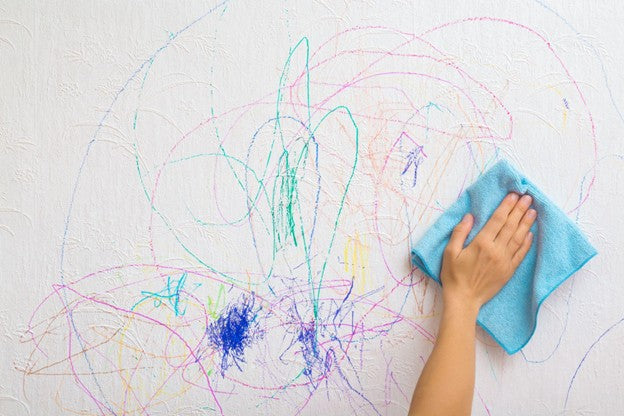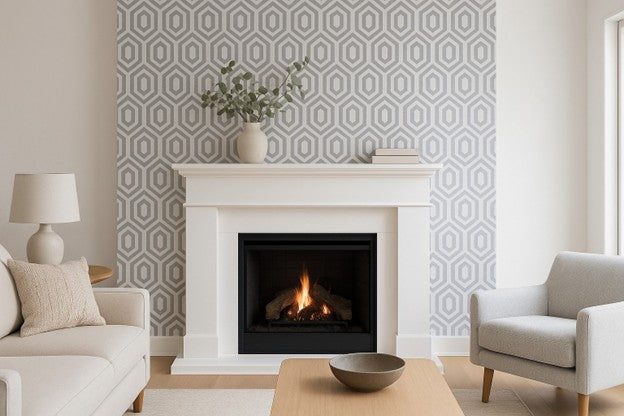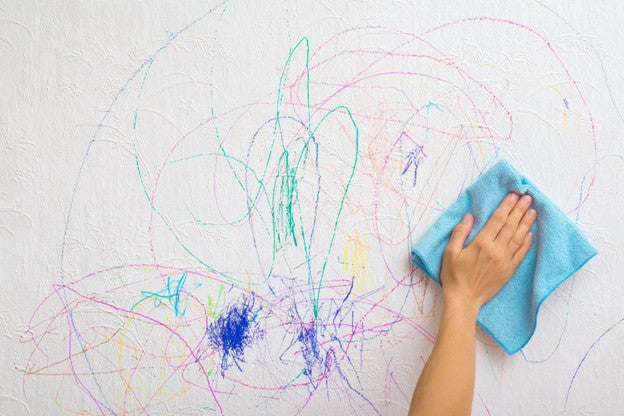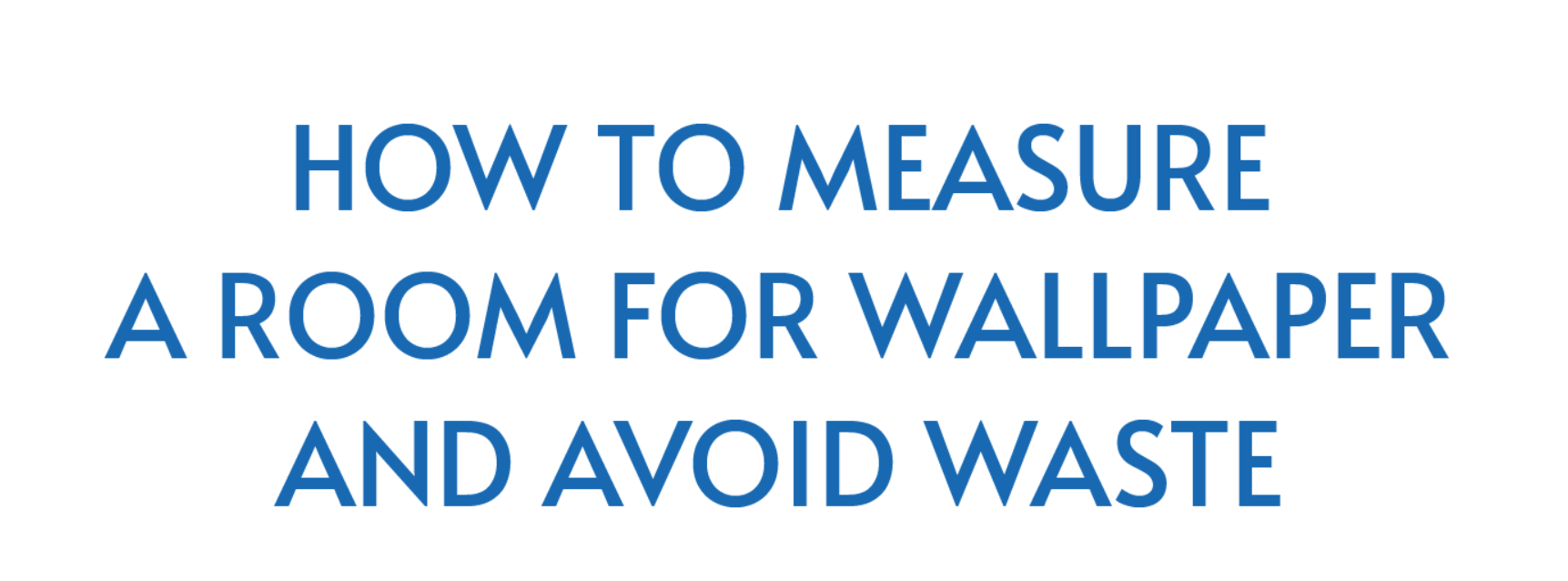Wallpaper brings texture and color to any space—but nothing disrupts its charm like a stubborn stain, whether it’s an oil smudge from cooking, a water stain from a leak, or everyday fingerprints. Fortunately, there are ways to solve this issue. Knowing how to clean your wallpaper safely is essential to keeping your walls beautiful without causing damage.
Using the wrong cleaning method for your material can lead to discoloration, peeling, bubbling, or permanent surface damage. That’s why understanding your type of wallpaper—and using the right tools and techniques—is the key to success. This guide will walk you through how to remove stains from wallpaper and introduce a few simple ways to prevent stains in the first place.
Understand Your Wallpaper Before Cleaning
Not all types of wallpaper are created equal. Before attempting any cleaning, identify whether your wallpaper is washable, scrubbable, or delicate. This will determine how aggressive you can be with your cleaning method.
● Washable wallpaper (such as vinyl or commercial-grade wallcoverings) is designed to handle mild detergent and water without damage. If you need to clean washable wallpaper, you can typically use a soft sponge, gentle dish soap, and warm water.
● Scrubbable wallpaper—typically vinyl-based—is built to handle repeated cleaning and light scrubbing. Ideal for kitchens, bathrooms, and commercial spaces, scrubbable wallpaper allows for more thorough cleaning with mild detergents and soft brushes, although care should still be taken to avoid damaging the material. Certain commercial wallcoverings—such as DuPont’s Tedlar—are highly durable and can withstand bleach and harsh cleaners.
● Delicate wallpaper—like grasscloth, silk, or stringcloth—should never be cleaned with water or household cleaners. These materials can darken or discolor permanently when exposed to moisture.
● Tip: Check the product label or manufacturer’s website to confirm your wallcovering’s cleanability rating.
For sensitive or high-end finishes, using KLASS Seam Tape during installation can help protect the face of the wallpaper from adhesive stains and reduce the risk of water damage later on.

How to Remove Common Wallpaper Stains by Type
Let’s explore the best ways to handle the most common types of wallpaper stains—without ruining the surface.
How to Remove Oil Stains From Wallpaper
An oil stain on wallpaper—often caused by skin oils or cooking splatter—can be especially tricky. For vinyl or scrubbable wallpaper, mix a few drops of grease-cutting dish soap with warm water and gently blot the area using a microfiber cloth.
If you’re curious about how to remove grease stains from wallpaper that’s more delicate, try this dry method:
- Blot any excess with a paper towel.
- Sprinkle cornstarch, talcum powder, or baking soda over the stain.
- Let it sit for a few hours to absorb the oil.
- Gently brush off with a soft cloth or vacuum using a brush attachment.
This is one of the safest approaches for fragile, non-washable wallcoverings where water is not an option.
How to Remove Water Stains From Wallpaper
A water stain on wallpaper may appear as a tide mark or darker patch, often the result of leaks or splashes. The removal method depends entirely on your wallpaper type.
If you have washable wallpaper, you can try:
● Gently dabbing the stained area with a solution of warm water and mild dish soap.
● Rinsing with clean water using a damp sponge.
● Blotting dry with a towel.
For non-washable surfaces, unfortunately, water damage is usually permanent. Prevention is the best defense—fix leaks quickly and avoid over-wetting the wall when cleaning.
How to Prevent Stains During Installation: Work Clean
One of the most effective ways to avoid staining your wallpaper is to install it using the “working clean” method. A key part of this method involves using KLASS Seam Tape, particularly when working with high-end or natural fiber wallcoverings. Here's how it works:
- Apply the seam tape along the edge of the back of the wallpaper panel.
- Book the wallpaper panel and allow it to relax.
- Install the wallpaper panel so the taped edge slightly overlaps the already-installed panel.
- Smooth the panel into place and trim both layers at the seam using a straightedge and a sharp blade.
- Carefully remove the excess strips and peel away the seam tape—taking any stray adhesive or residue with it.
This process ensures the underlying wallpaper remains clean and protected from paste, reducing the risk of visible adhesive lines or discoloration after drying.

Removing Excess Residual Paste
Even with the best intentions, it’s possible to miss a spot during installation—especially when using traditional adhesives. Over time, dried paste can leave behind a cloudy haze, especially on vinyl wallcoverings.
To resolve this, ROMAN recommends two proven cleaning methods for vinyl wallpaper:
1. Three-Bucket Method
To remove residual adhesive from vinyl wallcoverings during or immediately after installation, professionals use a technique called the three-bucket method. This isn't about mixing different cleaning solutions—it’s about maintaining tool cleanliness to prevent paste smears or haze.
Here’s how to do it:
● Set up three stations, each with:
○ A bucket of clean, warm water
○ A fresh sponge
○ A clean, absorbent towel
● Start cleaning with the first set. As the water gets cloudy or the sponge becomes tacky, move to the next station.
● This prevents dirty water or paste-covered tools from being reused and redeposited on the wallpaper.
For best results, use an all-natural sea sponge, which can lift paste without damaging the wallpaper surface.
2. Diluted Paste Remover
You can also dilute ROMAN’s PRO-466 Concentrate Wallpaper Paste Remover with water and use it with a soft sponge to target specific adhesive spots. Add 10.5 oz. of remover for every gallon of hot (120°F) water. Always test in an inconspicuous area before applying across a broader surface.
Cleaning Tips for Common Stains
Here’s a quick reference guide for tackling everyday wallpaper messes based on both the type of wallpaper and stain source:
|
Stain |
Recommended Cleaning Method |
|
Grease/Oil |
Cornstarch or talcum powder for delicate wallpaper; dish soap solution for vinyl |
|
Water Stain |
Mild soap + water for washable wallpaper; irreversible on delicate materials |
|
Lipstick/Ink |
Dab gently with isopropyl alcohol (test first); avoid scrubbing |
|
Coffee/Tea |
Mild dish soap and water; rinse well and blot dry |
|
Dust/Dirt |
Microfiber cloth or dry cleaning sponge for textured or non-washable wallpaper |

Trust ROMAN Products for Best Results
Removing wallpaper stains without causing damage is entirely possible—as long as you match the cleaning method to your wallpaper type and the specific stain. By using water-based, non-staining adhesives like ROMAN’s PRO-838 and practicing smart installation techniques like working clean with KLASS Seam Tape, you can avoid many common problems and maintain a fresh, beautiful finish for years to come.
For expert-preferred adhesives, primers, removers, and accessories, explore the full ROMAN catalog online. With the right products and techniques, keeping your wallpaper pristine is easier than ever.
Recent Posts
-
How to Use Wallpaper to Create a Faux Brick Effect
read more >> -
Wallpapering Inside Closets & Pantries: A Fun Surprise Element
read more >> -
How to Install Wallpaper on a Fireplace Surround for a Bold Touch
read more >> -
How to Wallpaper a Kitchen Backsplash (and Waterproof It)
read more >> -
How to Remove Stains From Wallpaper Without Ruining It
read more >> -
How to Measure a Room for Wallpaper and Avoid Waste
read more >>







